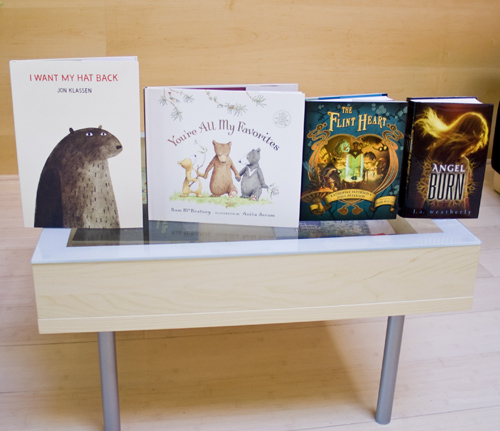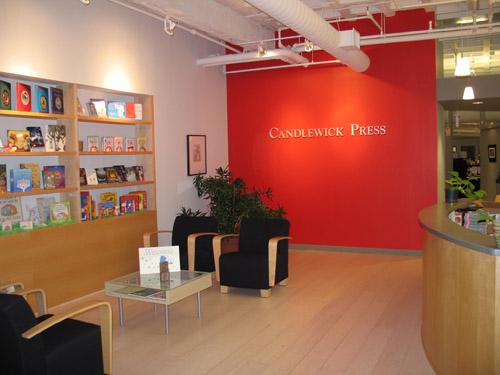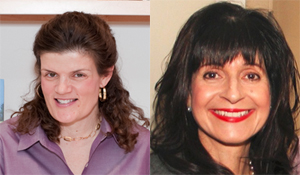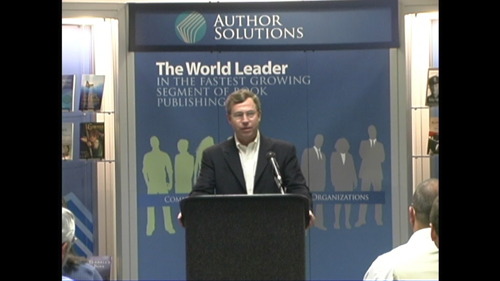
Karen Lotz est le directeur général du groupe Walker Books Ltd., une société basée à Londres qui comprend toutes les sociétés de l'enfant d'édition Walker Livres britanniques, Walker Books Australia, Américaine Candlewick Press, et l'unité de développement de télévision pour enfants, Walker Productions. She is the President and Publisher of Candlewick Press. The Walker Books Group is one the world’s largest employee-owned publishing companies, and it has a unique business model that includes more than one hundred and fifty authors and illustrators in its profit sharing. I recently interviewed Karen regarding the future of children’s books.
What is your estimate for children’s e-books and print books over the next 3 à 5 ans?
The children’s books market was estimated to be over $3 billion in sales in 2010, environ 25% of the overall book market. We are beginning to see traction for digital sales of young adult fiction, though children’s as a whole is well behind the adult marketplace in terms of what percentage of new releases might be purchased in print versus e-book. Over the next 3 à 5 ans, I can imagine that digital will trump print in the majority of cases rather than the exception. Currently a lot of adults, as well as teens, buy new young adult books in digital form, which is a really good thing in terms of expanding our market overall. Teens are purchasing more than ever before as reading devices proliferate, and from Candlewick’s perspective we’ve also seen some significant growth in middle-grade digital purchasing during 2011. Picture book publishing in digital form is still in its infancy, but that too will change more quickly than we can imagine. Dans 5 année vous aurez un tout nouveau marché de matériel de lecture numérique pour les jeunes enfants, dans toutes les nouvelles formes – some of which we can’t even envision yet.
Sales in children’s picture books seem to have fallen in the last decade. Do you believe this trend will continue with e-books?
It’s interesting to hear that statistic, because from my perspective, it’s not so true. Some of the most successful picture book publishing has happened during the last decade, a period during which we basically doubled in U.S. revenues as a company, and it’s been a catalyst for our growth. For Candlewick Press and Walker Books globally, picture book investment continues stronger than ever, and our sales are also very strong, even given the loss of some key retail partners that supported picture books, such as Borders in the U.S. and U.K., and some key chains in Australia. Our other partners, bien que, including the U.S. independents, are as strong as ever. We do excellent business in China with picture books, and our first Chinese picture book that we’ve brought in, A New Year’s Reunion, has just been recognized as a New York Times Best Illustrated Book of the Year. The market for young adult fiction has grown, but it does not seem to me that it’s been at the expense of picture books, as others suppose. Without loving picture books, kids are less likely to grow up to love chapter books or graphic novels, etc. Reading starts here: that’s our picture book publishing motto.

What will Candlewick’s products for young readers look like – for print, e-readers, et tablettes? How much emphasis are you putting on digital products?
We consider digital editions to be simply another format. We have a very organic process for determining which books go into e-books, just like we do for hardcovers, paperbacks, novelty books, and board books. Every department at Candlewick is involved in making sure that the quality of our e-books is superb and equivalent in every possible way to our beautiful print editions. It is a much more intensive process than simply scanning a page and distributing it in digital form. One aspect of e-books that we have agonized over is typography. Thank goodness, technology is now catching up to enable more graphic choices, and to once again open the doors for a unique aesthetic of presentation. Decades, even centuries of wisdom about typographic choice go into the design of each print book, especially when it comes to designing books for young children. How we learn to read has everything to do with what we see – and don’t see – on the page.
Do you see brick and mortar outlets (librairies, school libraries) continuing to attract the youngest readers?
I believe brick and mortar outlets – and I love that you include libraries in that category – are going to be hugely important for the youngest readers going forward. L'expérience d'être dans une salle pleine de livres, pour un enfant, est une des expériences les plus riches en possibilités et passionnantes on peut avoir. Pour regarder une étagère de livres, pour tirer une parce qu'elle nous attire, and to begin to read is a sacred and amazing process. We know from research that the process of reading aloud to a child is incredibly beneficial and cannot be replaced by mechanical interactions of any kind. Librairies et bibliothèques sont les lieux parfaits pour le partage communautaire des livres, within families and between professionals and children. I can absolutely see a world where physical book outlets will continue to be places of wonder for young readers, made even better through the best technology being added into the mix, but this will only be true if one thing happens: we must continue to support the importance of reading to our children as a culture. Si nous ne le faisons pas, a much bigger future than that of bookstores and libraries is at stake.
What will the evolution mean for illustrators and authors of children’s picture books? Par exemple, will sound, animation and interactive features become important? Will authors and illustrators become less dependent on publishers?
I really believe that in our new digital world, publishers have the opportunity to be what we always have been: book lovers, spotters and nurturers of talent, cultural drivers, great marketers, thoughtful salespeople, and fanatical caretakers of all the detail. Authors often have wonderful ears, meaning that music, speech and drama are often very natural to them. To employ their talents in new ways is an interesting challenge. For illustrators, obviously the choices and possibilities are endless – no longer being bound strictly by the 32-page forms of the printing presses, par exemple. But for those authors and illustrators who love the haiku of a printed picture book, and the challenges the limitations pose, I hope those forms will always be there too. They certainly will be there at Candlewick.
What are your favorite paper and e-books for children this holiday season?
When it comes to our books, I love them all! And with that, a lovely backlist title for families with siblings pops into my mind: You’re All My Favorites, by Sam McBratney and Anita Jeram. Among our new books, the picture book I guarantee you’ll clutch with joy is I Want My Hat Back by Jon Klassen. For teens, there is a series by L.A. Weatherly that begins with Angel Burn — it’s very satisfying and highly addictive. For a true holiday classic to give as a gift, Essai The Flint Heart by Katherine and John Paterson, illustrated in full color by John Rocco. It is one of the most beautiful physical books we’ve ever offered. This is a retelling of a fabulous early twentieth-century novel by Eden Phillpotts that established how the heartbeat of ultimate good and evil came to be buried in England’s dark moors, years before Gollum even found the Ring. My favorite quote from Phillpotts: “The universe is full of magical things, patiently waiting for our wits to grow sharper.”

Photos courtesy of Candlewick Press.
Comment allons-nous savoir? Page Communauté
Pour plus Comment allons-nous savoir? articles: cliquez ici
C.M. Rubin est l'auteur de la série largement lu en ligne, La recherche globale pour l'éducation, et est également l'auteur de trois livres à succès, Y compris The Real Alice au pays des merveilles.





Commentaires récents